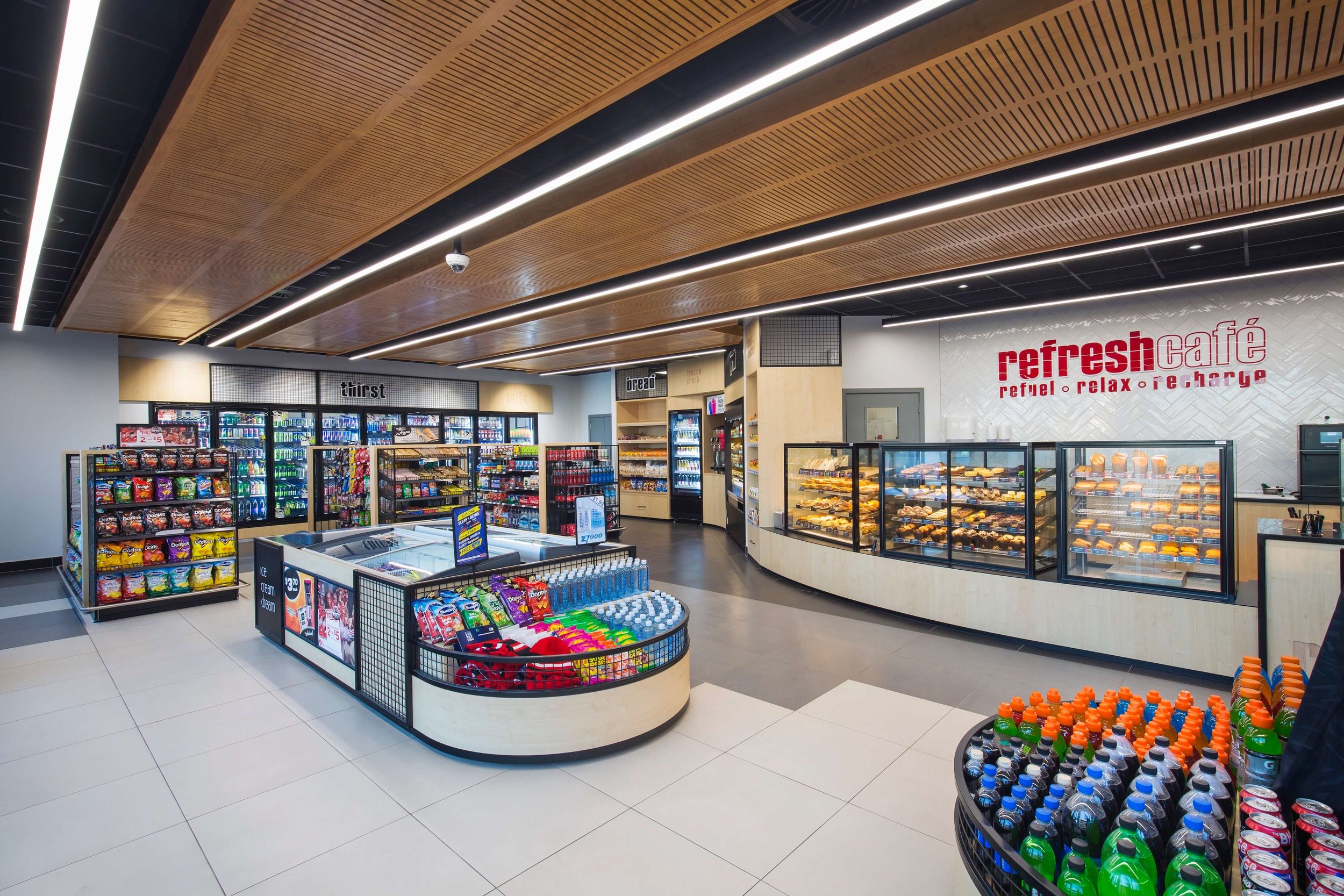This post was originally published on 12 May 2021 and updated on 22 February 2023
As consumer demand for convenience, speed, variety and affordability rises, the convenience store format needs to transform. Kelly Brown describes four areas to focus on to modernise the c-store CX.
With demand for traditional fuel expected to plateau around 2030, fuel retailers are urgently innovating to replace shrinking revenues and dwindling profits.
The leaders have quickly moved to improve and expand their traditional products and services and launch in new, but related, market segments. They recognise that the future business of fuel will be less vehicle-centric and more focussed on the customer. They’ve developed a customer-centric mindset and are building new skills and capabilities to compete with unfamiliar competitors.
We’ve seen some impressive transformations. The retailers making the first move are creating differentiated experiences for competitive advantage and forming strong customer relationships that are driving up conversions and profits.
It’s an immense undertaking.
While fuel retail has always been challenging – very fast service is non-negotiable, transaction volumes are high and operations typically run 24x7 – this requires a fundamental transformation of the standard business model.
And customer expectations have never been higher. Today’s consumers expect brands to deliver fast and frictionless experiences through compelling interactions across all physical and digital touchpoints.
Building customer loyalty requires a complex mix of emotional and rational factors that enable you to connect and build relationships with customers across all your channels and communications.
So where should you focus?
Here are four areas to explore:
1. Enhance the purchasing experience
Create a seamless experience across the end-to-end ordering and purchase journey, with personalised offers and incentives to encourage store visits, and fast point of sale transactions on the forecourt and in stores.
A mobile app will let your customers pay for fuel without leaving their vehicles. Don’t restrict it to payments - use the app to help customers find their nearest service station, view their purchase history, accumulated loyalty points, discounts and rewards, or pre-order coffee, convenience items or a carwash.
Some retailers are making payments fully contactless with license plate recognition systems where customers essentially pay for fuel with their number plate. Our client Z Energy’s Pay by Plate helped grow its active customer base by more than 80% in a year.
By identifying customer pain-points and aggressively embracing innovation, Z Energy has delivered a world-first in fuel retail with the launch of its virtual fuel tank called Sharetank.
2. Create a Convenience Hub
The convenience store format is ready for change. Consumers are cutting back on big weekly supermarket shopping trips and choosing to purchase more of their groceries at easily accessible local stores.
Become a neighbourhood hub by expanding beyond traditional c-store offerings into high-quality products and fresh food, and design places customers want to visit, rather than need to visit.
In highway locations, encourage customers to stay as long as they want, with fresh in-store and takeaway food, and rest areas for travellers.
Consider the un-manned store model, which reduces costs while offering customers a quick, digital experience.
3. Offer ordering and pickup
With the surge in ecommerce over recent years, consumers want new options for purchasing, payment and fulfilment.
Boost sales and profits by letting customers place and pay for their order in advance using your mobile app. When they reach the store, all they need to do is pick up the order and go. Some fuel apps let customers order items while they fill up, and an attendant delivers them to their vehicles.
New self-serve software offers a simple yet sophisticated solution to meet customer demands for speed and convenience via digital experiences.
Draw online shoppers into stores by offering omnichannel services such as click-and-collect.
Home delivery apps let your stores drive sales and engage with new customers, while continuing to encourage their local communities to shop in store.
4. React smarter and faster to demand changes
Make better decisions about product assortments, by matching breadth and depth to demand, trends and local demographics.
A unified view of inventory will give you total control over your wet and dry stock to improve efficiency, reduce overall stock, create more satisfied customers and boost the bottom line.
Maximise profits, conversions and promotional impact by customising products, prices and promotions nationally, regionally and even by individual sites.
Offer a range of discounts to appeal to different shoppers, including dollars off the price, cost per litre, percentage off the price, cost plus a specific margin or markup and more.
Want help to revamp your c-store customer experience?
As you transform your CX to deliver the seamless and personalised buying journeys your customers crave, your point of sale and retail systems must transform as well. If you’re experiencing technology challenges that prevent you from unifying your physical and digital experiences, get in touch. We’d love to help you develop the agility to innovate and scale new services, faster

























